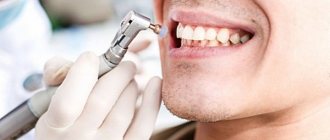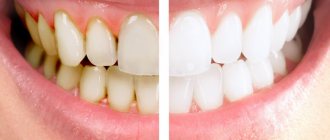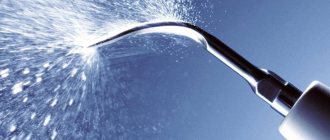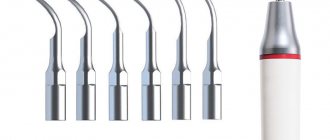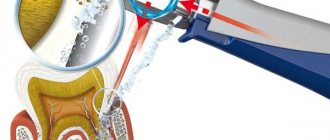22.11.2019
The human oral cavity is home to a huge number of different microorganisms. They settle on the teeth, gums, tongue and buccal mucosa. Colonies of microbes and their metabolic products lead to a number of dental problems. In addition, when bacteria enter the body, they provoke the development of gastrointestinal pathology.
To balance the ecosystem and improve overall health, regular and high-quality oral hygiene is necessary. The high effectiveness of such a procedure depends on the correctness of its implementation and some other nuances.
Why is oral hygiene necessary?
The importance of oral hygiene lies in the prevention of major dental diseases, as well as maintaining an attractive appearance of a person. By following the rules for conducting events, you can achieve significant results, including:
- formation of strong teeth;
- destruction of pathogenic microflora;
- prevention of the development of caries and periodontal disease;
- prevention of infectious diseases of the oral cavity and gastrointestinal tract;
- snow-white smile;
- fresh breath;
- savings on dental services.
As medical practice has shown, people with weakened immune systems and smokers are especially in dire need of hygienic care.
Types of oral hygiene
To maintain the microflora of the oral cavity, in which the teeth and oral mucosa will always be healthy and aesthetically pleasing, there are a number of hygiene measures. They are divided into two main types: personal hygiene and professional procedures.
In the first case, oral care is carried out independently at home. According to the recommendations of dentists, the procedure should begin at an early age, when children have their first teeth.
If cleaning the mouth at home does not bring the desired result, the second method is used. Professional cleaning is carried out in a medical institution by a dentist.
Each method requires compliance with a number of rules. Therefore, in order for the procedures to be highly effective, it is necessary to familiarize yourself with them in more detail.
Buy an irrigator for cleaning teeth
Before purchasing a device for cleaning teeth and gums, or an irrigator, we recommend reading and comparing customer reviews about the purchased models. Also on our website you can select and compare various models of irrigators in the catalog. The cost of such a design depends on its functionality and additional options, as well as on the status of a particular manufacturer. In our catalog you can study the cost of Waterpik irrigators from the Arcom company. You can purchase such a device for several thousand rubles, and it will last for a long time, so every buyer can afford a high-quality device, regardless of their level of material income.
Rules for carrying out hygiene procedures
In order for your personal oral hygiene to ensure thorough cleaning and create an attractive smile, you must purchase special cleaning products in advance and then follow the rules of the event.
Accessories for the procedure
Oral care is usually carried out using special cleaning products, including:
- Toothbrush for cleaning teeth, cheeks, tongue.
- Toothpaste for the prevention and treatment of diseases.
- Brushes for removing food residues in interdental crevices.
- Rinse to complete the procedure.
When it is not possible to brush your teeth, dental floss is used. To eliminate bad breath and small food particles after eating, it is recommended to use sugar-free chewing gum.
Rules for cleaning teeth
Oral hygiene rules depend on the choice of cleaning product. Using a toothbrush, the procedure is carried out as follows:
- The cleaning attribute is rinsed with running water.
- Apply a small amount of toothpaste to the bristly surface of the brush.
- At an angle of 45 degrees relative to the gum, the attribute is located in the open mouth.
- The upper teeth are cleaned from top to bottom using smooth, circular movements.
- The lower jaw is cleaned from bottom to top.
The above manipulations are carried out within 3 minutes. After this time, the toothbrush is turned over and the tongue is cleaned with a rubber nozzle. At the end of the procedure, the oral cavity is rinsed with warm water or a special rinsing solution.
When using dental floss, proper oral hygiene is carried out in the following order:
- For a one-time procedure, dental floss 40-50 cm long is cut.
- The thread seeps into the interdental crevices with smooth movements.
- Having reached the surface of the gum, the thread is directed in the opposite direction in a similar way without sudden movements.
Having cleaned one interdental gap in this way, move on to another. In this case, the thread must be clean for each section.
If the above hygiene measures do not get rid of plaque deposits on the teeth, dentists recommend professional cleaning.
Carrying out professional cleaning
Oral hygiene with professional help is carried out to eliminate accumulations of soft plaque, which over time develops into tartar. When a hard stone forms, a person loses his attractive appearance. In addition, against the background of this pathology, concomitant dental diseases develop.
To prevent these negative phenomena, the dental hygienist prescribes measures using medical instruments and special equipment.
Rules for preliminary examination
Before proceeding with professional intervention, the dentist must first carefully examine the patient. Medical methods of oral hygiene depend on the following diagnostic indicators: caries intensity index, hygienic index, assessment of the condition of the mucous membrane, type of bite, and the presence of dental pathologies.
After assessing the condition of the oral cavity, the specialist must form a responsible attitude towards the prescribed procedure in the patient. It is important that a person understands that medical oral hygiene can completely get rid of periodontal disease and improve the external condition of teeth.
Carrying out procedures
A medical complex of measures to remove persistent dental tumors can be carried out therapeutically, orthodontically or surgically. Each event is conducted by a dentist in a medical office.
In order for professional oral hygiene to go smoothly, before it begins, the patient is prescribed rinsing the nasopharynx with an antiseptic solution.
For major operations, anesthetic medications may be used, in the form of sprays or injections. The professional cleaning complex includes several stages.
Elimination of plaque and tartar. An ultrasonic device is used for this. In some cases, manual mechanical cleaning with dental instruments is used.
Removing pigmented plaque. A popular device for cleaning teeth from soft plaque is the AirFlow device. As a result of the pressure of the emitted water, air and soda, the enamel becomes lighter by 2 shades.
Polishing teeth. This method uses professional products that contain zirconium microparticles.
Fluoridation. This method involves strengthening the enamel with fluoride-containing gel trays. The procedure lasts only a minute, but during this time the enamel has time to become saturated with fluoride ions, due to which it becomes stronger.
Fissure sealing. This method involves using composite resins to fill the grooves of the teeth on the chewing side using a special tool.
Many patients neglect professional procedures, as well as the visit to the dentist itself. However, this position is fundamentally wrong.
By contacting a specialist in a timely manner, you can avoid dangerous pathologies of the oral cavity, as well as receive recommendations for daily care so that individual oral hygiene brings significant benefits.
Recommendations for oral hygiene
In medical practice, there are certain rules for the technique of cleaning the mouth. Compliance with them does not require much effort or difficulty.
Oral hygiene recommendations from experts:
- To maintain the microflora in the mouth and the strength of the teeth, it is necessary to follow a balanced diet of dairy and legumes.
- To brush your teeth, it is better to choose a brush with synthetic bristles.
- The cleaning attribute should be replaced every 3-4 months.
- Clean your mouth with a toothbrush and toothpaste 2 times a day. The first procedure is carried out in the morning, the second before bedtime.
- Various oral hygiene practices should include cleaning the tongue and gums. This will be a good means of preventing periodontal disease.
- After each procedure, the toothbrush must be thoroughly rinsed with running water.
- It is recommended to clean the spaces between teeth after every meal. To do this, you can use dental floss or special wooden sticks.
- It is better to entrust the monitoring of the condition of the oral cavity to the dentist.
- Professional hygiene should be carried out 1-2 times a year by a qualified specialist.
- For hard-to-reach areas of the mouth, it is advisable to purchase specialized tools, such as a brush and floss.
- Don't neglect mouthwashes either. Their regular use contributes not only to fresh breath, but also to the strength of the enamel structure.
It is recommended to explain the rules of oral care to a child from an early age. In this case, the cleaning procedure will become an integral part of a person’s life, which will significantly reduce the risk of pathologies in the oral cavity.
History of the irrigator
This invention can be considered relatively new. It was first introduced about 60 years ago - in the early 1960s. The development of the instrument was carried out by an experienced dentist from the USA in a small town in the west of the country. He was also an engineer, so he had the opportunity to combine his knowledge in both areas and apply it in practice. Since then, the device has been tested many times, experiments and various studies have been carried out on it, which have proven the effectiveness and positive effect of the Waterpick teeth washing apparatus.
After some time, irrigators for washing teeth began to be produced not only in America, but also in other countries, including Russia. The leader in this area is the American manufacturer Waterpik, which boasts not only a wide range of models with various functions, but also a long warranty, quality materials, high build quality and durability. The company began collecting dental appliances back in the last century and currently offers a wide range of models.
Consequences of neglecting hygiene rules
Failure to comply with the rules of oral hygiene, at best, will lead to bad breath and the development of caries. But, as medical practice has shown, such neglect will have more serious consequences.
A large accumulation of harmful bacteria in the absence of hygiene procedures or their improper implementation contributes to the development of the following pathologies:
- Gingivitis. This is an inflammatory process of the gums that affects the alveolar process of the jaw. The pathology is accompanied by putrid breath, bleeding gums when brushing teeth individually, itching and a negative perception of the taste of food.
- Candidiasis. This inflammatory process develops when Candida bacteria enter the mouth. In pathology, swelling of the oropharynx and a white coating on the tongue are observed. In an advanced form of the disease, erosions may appear on the surface of the oral mucosa.
- Periodontitis. This pathology affects periodontal tissue. Symptoms of periodontitis include the formation of hard stone, tooth mobility, and the presence of purulent or serous discharge.
- Stomatitis. Such damage to the lining of the mouth occurs due to the proliferation of infectious microorganisms. When bacteria enter the human body, they destroy the surface structure of the gums, tongue and cheeks. Subsequently, ulcers appear on the affected areas.
As you can see, each pathology develops due to the entry of harmful bacteria into the oral cavity, where there is an optimal habitat for their growth and reproduction. Only careful daily oral care can correct this phenomenon.
Category Miscellaneous Published by Mister dentist
Why is dental plaque dangerous?
Bacteria attached to the surface of the teeth produce acids as a result of their vital activity. These substances have a detrimental effect on the enamel, causing its damage and further development of caries. Hard deposits also affect soft tissues, as they are located mainly in the cervical area and provoke inflammation of the gums. If the situation is not corrected, gingivitis and deeper forms of gum inflammation develop over time.


